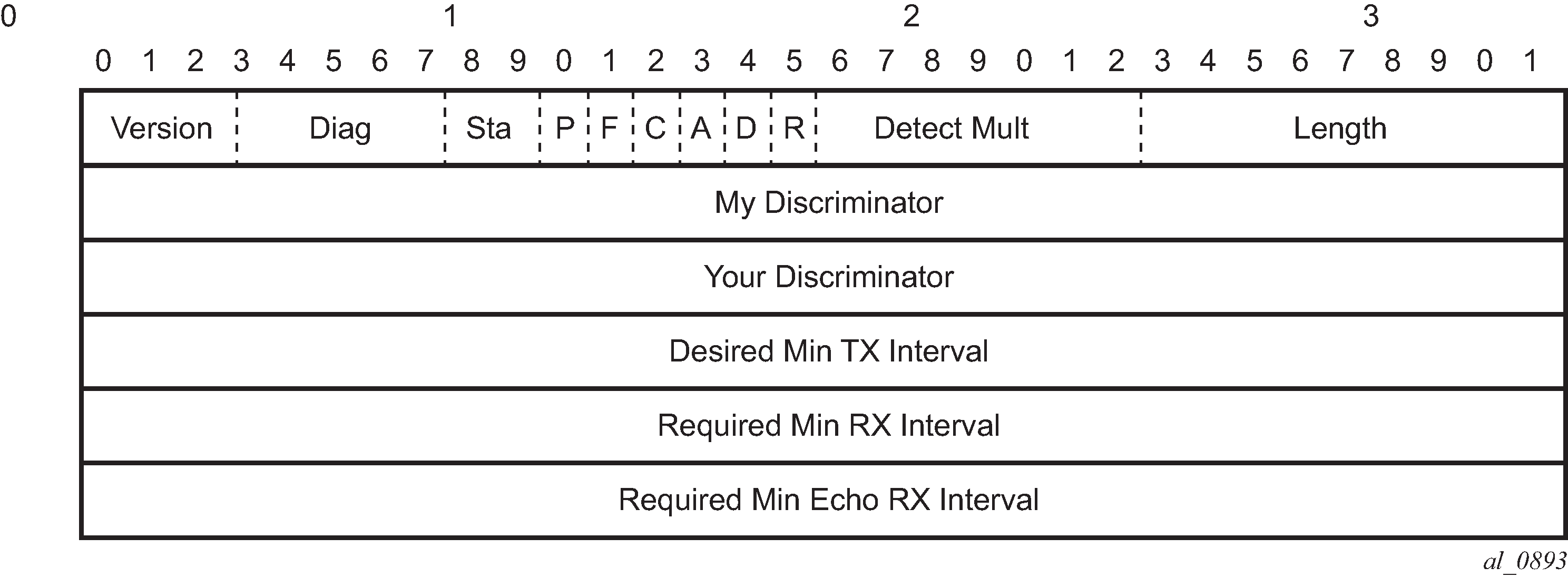The BFD control packet has two sections: a mandatory section and an optional authentication section.

| Field | Description |
|---|---|
Vers |
The version number of the protocol. The initial protocol version is 0. |
Diag |
A diagnostic code specifying the local system’s reason for the last transition of the session from Up to some other state. Possible values are: 0-No diagnostic 1-Control detection time expired 2-Echo function failed 3-Neighbor signaled session down 4-Forwarding plane reset 5-Path down 6-Concatenated path down 7-Administratively down |
D Bit |
The demand mode bit. (Not supported) |
P Bit |
The poll bit. If set, the transmitting system is requesting verification of connectivity, or of a parameter change. |
F Bit |
The final bit. If set, the transmitting system is responding to a received BFD control packet that had the poll (P) bit set. |
Rsvd |
Reserved bits. These bits must be zero on transmit and ignored on receipt. |
Length |
Length of the BFD control packet, in bytes. |
My Discriminator |
A unique, non-zero discriminator value generated by the transmitting system, used to demultiplex multiple BFD sessions between the same pair of systems. |
Your Discriminator |
The discriminator received from the corresponding remote system. This field reflects back the received value of my discriminator, or is zero if that value is unknown. |
Desired Min TX Interval |
This is the minimum interval, in microseconds, that the local system would like to use when transmitting BFD control packets. |
Required Min RX Interval |
This is the minimum interval, in microseconds, between received BFD control packets that this system is capable of supporting. |
Required Min Echo RX Interval |
This is the minimum interval, in microseconds, between received BFD echo packets that this system is capable of supporting. If this value is zero, the transmitting system does not support the receipt of BFD echo packets. |